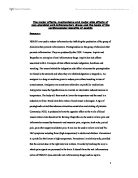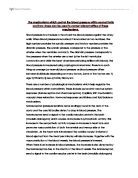Mechanism:
The anti-inflammatory effects take time to appear, it may take few days to three weeks to come on. The NSAID’s work by inhibiting the COX enzyme which releases the chemicals in the body that causes inflammation (Prostaglandins). Prostaglandins have a number of essential functions which includes promoting inflammation, fever, and pain. They also support the function of platelets that are important for the clotting of blood, and protect the lining of the stomach from the damaging effects of acid.
There are two types of COX enzymes, Cox-1 and Cox-2. Both enzymes are responsible for the production of prostaglandins. However, only Cox-1 produces prostaglandins that support platelets and protect the stomach.
Antipyretics lower fever by affecting thermoregulation in the CNS and by inhibiting the action of prostaglandins peripherally. Many antipyretics affect platelet function; of these, aspirin has the most profound effect as compared with other salicylates, ibuprofen, or ketoprofen.
Prostaglandins are involved in several other organs such as the gastrointestinal tract (inhibit acid synthesis and increase secretion of protective mucus), increase blood flow in kidneys, and leukotriens promote constriction of bronchi associated with asthma. (British National Formulary)
Antipyretics cause the hypothalamus to override an interleukin-induced increase in temperature. The body will then work to lower the temperature and the result is a reduction in fever. Another example of an antipyretic is Paracetamol.
An analgesic is a drug or medicine given to reduce pain without resulting in loss of consciousness. Analgesics are sometimes referred to as painkiller medications. There are many different types of analgesic medications available in both prescription and over-the-counter preparations. Examples of analgesic drugs include aspirin, acetaminophen (Tylenol), ibuprofen (Motrin, Advil), naproxen (Aleve, Naprosyn), the COX-2 inhibitor celecoxib, and narcotic drugs including morphine, oxycodone, and hydrocodone (Vicodin). Analgesics may also be combined with other drugs in some types of medications (for example, analgesics are combined with decongestants and/or antihistamine in many over-the-counter cold remedies).
Aspirin is used in low doses to prevent heart attacks and blood clot formation in people at high risk for developing blood clot. Aspirin can be bought over the counter without a doctor’s prescription. (Spine-Health)
Aspirin
Because of the high availability of Aspirin, it is one of the most misused drugs. It has several modes of action. It interferes with pain signals to a part of the brain called the Thalamus. Aspirin also irreversibly inhibits chemical mediators of inflammation, which produce pain and further inflammatory reactions. These chemicals are released following tissue and cell damage. In addition, aspirin reduces fever by having an effect on the hypothalamus in the brain, which leads to vasodilation and sweating
Side Effects:
There a number of side effects associated with taking NSAID’s. They are unlikely to occur. They are more likely to occur with prescription-only NSAID’s. They include indigestion, heartburn, feeling sick or vomiting, diarrhoea, bleeding and ulceration in the stomach. The reason why NSAID’s are likely to cause indigestion is because of the inhibition of the COX enzyme which produces prostaglandins. Prostaglandins are found in the stomach and it can be inhibited by the NSAID’s.
Other less common side effects of NSAID’s include ankle swelling, headache, dizziness, a sensation of spinning (vertigo), ringing in the ears (tinnitus) and unusual bruising or bleeding.
NSAID’s can also cause allergic reactions such as skin rashes and wheezing, especially in people who get asthma.
NSAID’s in the form of creams and gels can cause reddening, smarting, itching and skin rashes when rubbed on the skin.
Effective use of NSAID’s
It is better to use NSAID’s continuously to build up an anti-inflammatory blood level, and the efficacy is markedly lower if taken only when experiencing pain. Taking the drug regularly in the prescribed/recommended dose lets the drug build up over time in order to have an anti-inflammatory effect and allowing the area a better healing environment.
NSAID’s potential risks and complications
NSAID’s are cleared from the blood stream by the kidney, so it is very important that patients over 65 years of age or patients with kidney disease consult a physician prior to taking the medication. If patients take an NSAID for an extended period of time (six months or more), a blood test needs to be performed to check for early signs of kidney damage.
NSAID’s may also cause stomach upset or possibly ulcers. Patients with stomach ulcers or a history of stomach ulcers should first consult with their physician. Signs of stomach ulceration and intestinal bleeding typically include one or a combination of the following symptoms: abdominal pain, black tarry stools, weakness, or dizziness upon standing. (BUPA (2007))
Blood Clotting:
Blood clots form when a blood vessel is damaged. A type of prostaglandin called thromboxane stimulates constriction and clotting of platelets. Conversely, PGI2, is produced to have the opposite effect on the walls of blood vessels where clots should not be forming.
Paracetamol
Paracetamol is a painkiller that lowers a high temperature. Paracetamol is relatively safe, provided that the correct dose at the right intervals is taken. An overdose is dangerous. It works by blocking the way in which pain signals are processed in the brain. It doesn't have the anti-inflammatory action of NSAID’s (non-steroidal anti-inflammatory drugs) such as aspirin.
Side-effects of Paracetamol:
When taken at the recommended dose, side-effects of Paracetamol are rare. Skin rashes, blood disorders and a swollen pancreas
One advantage of Paracetamol over aspirin and similar drugs (e.g. ibuprofen and diclofenac) is that it won't upset your stomach or cause it to bleed.
A Paracetamol overdose is particularly dangerous because the liver damage may not be obvious for four to six days after the drug has been taken. Even if someone who has taken a Paracetamol overdose seems fine and doesn't have any symptoms, it's essential that they are taken to hospital urgently. An overdose of Paracetamol can be fatal.
Ibuprofen
Ibuprofen can be used to relieve pain and inflammation caused by rheumatic and muscular pain, headaches, migraine, back ache, period (menstrual) pain, pain after surgery and dental pain. It can also be used to relieve cold and 'flu-like' symptoms including fever (high temperature) in adults and children. Ibuprofen works by reducing the effect of irritant chemicals which are produced by the body as a response to inflammation and high temperature. Ibuprofen is available in tablet, oral liquid and effervescent granule form. (Ritter JM. Pharmacology)
NSAID’s are very useful because they reduce inflammation. They are very common and they are highly used. NSAID’s should be used appropriately to avoid side effects and so that the best results can be gained from them. They should not be abused because using them in the incorrect manner will result in more serious diseases.
References:
- Rang HP, Dale MM, Ritter JM. Pharmacology. 5th ed. London: Churchill Livingstone. 2003
- Non-opiod analgesics. British National Formulary 2006. 51:161
-
BUPA (2007) Accessed on the 28th of November.
-
Spine-Health Peter F. Ullrich, Jr., MD (2005) Accessed on the 28th of November.
- Rang HP, Dale MM, Ritter JM, Moore PK. Pharmacology. 5th edition.







